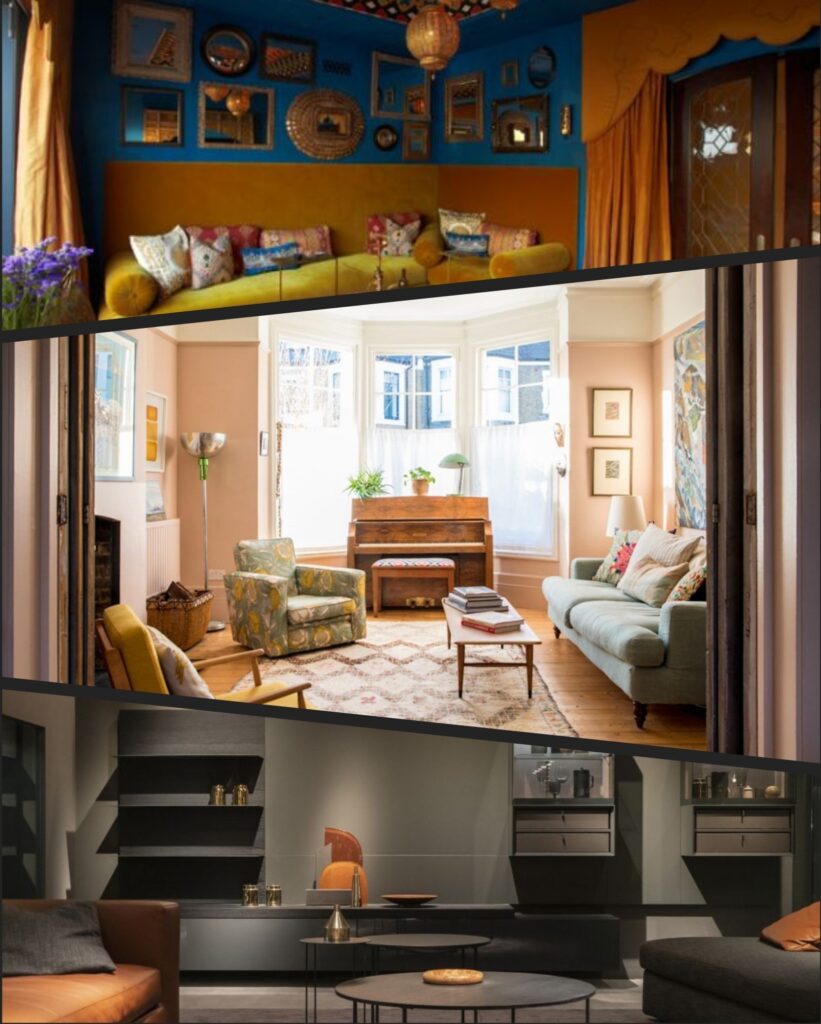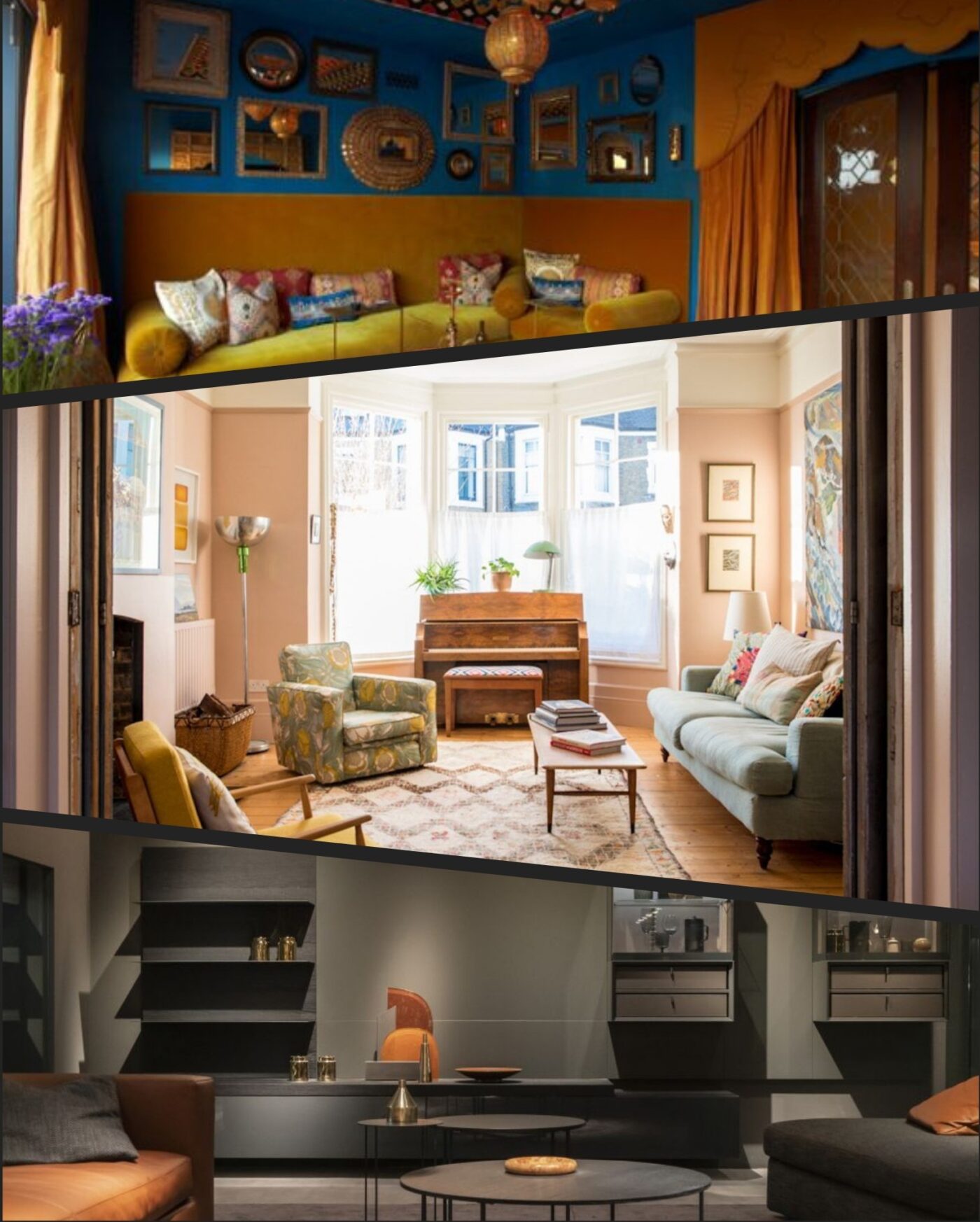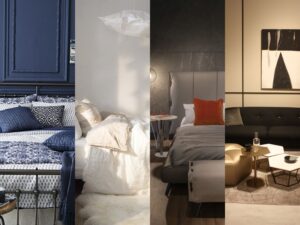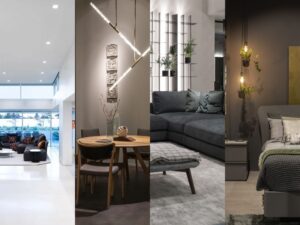
Home is where the heart is. Making home wherever we go is the not-so-hidden talent we all possess. It could be hanging fairy lights, covering the walls with polaroids and posters, flooding the bed with throw pillows and stuffed toys, building a gaming corner with a LA-Z-BOY, or even painting a mural on your wall — no matter how bad you are at it. We decorate the space we live in, keep our workspace organized and vibrant to motivate us and keep going back to that one restaurant only for the ambience it provides. The geometry, the colour scheme, the airiness and the slight touch of indoor plants all contribute to the way we respond to a particular space.
Interior space decoration shoulders the responsibility of directly affecting a person’s emotions and perceptions. Our subconscious interacts with the colour, spatial arrangement, geometry, light, ventilation, and negative spaces, impacting us psychologically. Differently designed spaces evoke different emotions within us. Some spaces calm us down, while others make us anxious. Some make us feel at home; some take us to a land far away. There is a reason we get up from bed and tape back the swishing poster—it affects the ‘comfiness’ of our sleep on a psychological level and also frees our minds. The effect of colour and lighting are similar to taping back the swishing poster—pulling a nine on our ‘comfiness’ radar.
Effect of Colour
“Colour is a power that directly influences the soul.”
– Late Russian painter Wassily Kandinsky
We live in a world of colour. From the description of everyday things to colouring souls and aura, we are surrounded by an incredible number of colours. A simple trinity, the primary colours, give birth to about 10 million colours aided by shades of white and black. Good things do come in threes.
At a young age, we all learn to associate colours with moods. Rainbows bring a smile to our faces and the same childlike wonder we carry all through life. Light colours brighten our spirits, and dark colours are often associated with negative emotions.
Colours are said to be the “immediate connection to the world.” Therefore, colours are used while communicating as a language to express how we feel. It is no surprise that we say phrases like “green with envy”, “seeing red”, and “feeling blue”. Colours are also an essential aspect of art therapy, influencing a person’s physical and mental state.
Designing with your colours
The interior design reflects a person’s character and preferences. Colour psychology is based on the theory that each shade affects our brain. Colour schemes are therefore essential and play a massive role in setting up spaces; it plays on the subconscious of the inhabitant. The way everyone reacts to colour is different.
When redecorating or adding flair to a room, we consider the “vibe” we want to present. Shades of red add passion and excitement to the room. The colour triggers conversations and intimacy. A vibrant colour that brings about high energy levels is typically used in office buildings, bedrooms, or the living area. Pink ignites love and compassion and a touch of playfulness. However, it is used chiefly with neutral tones and in pattern to bring out the true essence of the colour.
On the other hand, brown is a neutral shade. It brings along with it a sense of calmness. Despite a calming effect, tones of brown are used sparingly, mainly not to keep us in bed all day as that is how relaxing the shade is. Yellow and Orange are cheerful colours; both these hues are used in the kitchen area. They stimulate appetite and increase the overall brightness of the room. However, finding the right shade is essential; no one wants a dull yellow living room.
The cool shades like blue, green and purple, have a touch of serenity. While it is crucial to choose the perfect shade of green, blue has little to no negative effects. Both these hues—green and blue—can be used throughout the house with different shades. Purple is associated with royalty, with creativity. Feel like the queen you are with this colour, and stage your fashion show with elegance in your closet with this colour adorning the walls.
Black and white are universally versatile colours. While black radiates elegance, white opens up the room. They are the favourite colours of modern architecture. Black may sometimes be overwhelming and even gloomy and can be paired with vibrant hues to lift spaces. White is associated with peace and tranquillity and is the perfect blank canvas for all our experiments.
The effect of colour on psychology and the importance of colour psychology is reflected in every space we step in; it also affects our dreams. It is no surprise that we do countless swatches to get the perfect shade of the perfect colour on our bedroom walls.
“Find the happiest colours—the one that makes you feel good.”
-Joan Crawford
Effect of Light
While often lighting takes on a secondary stand, it plays a vital role in regulating our mood. In 2014, a Journal of Consumer Psychology study found out that with an increase in the intensity of lighting, the intensity of the emotion also increased positively and negatively. The study stated that bright lights with hints of reddish hues increased the feeling of warmth. While for bluish tint, a sense of angst was noted.
When we think of lighting our homes, the purpose of each room comes into play. While the kitchen and the workspace require brighter lighting, living areas call for mellow, warm lighting.
As we enter, the transition of lighting from the exterior to the interior must be considered, and hence must be smooth. At night, the lighting must transition from the dark outdoors to warm and relaxing colours of illumination. One must not forget the impact of natural lighting, as it improves our mood and helps relax our bodies as we fall asleep.
Lighting not only impacts your mood, it further affects the shape and size of a room. For a notably smaller room, light coloured walls with extra light reflecting off the surface plants an impression of a big room. Receding lights with a soft glow also add to making a room larger.
Savings and environment-friendly tactics
While thinking about lighting, we tend to look into cost and savings. Painting a room with brighter colours helps reduce the direct and indirect savings. Direct savings are for brighter painted rooms, hence needing less light, while indirect savings are obtained during periods when the room is actively cooled. As we decrease the energy used in the adequate light, we reduce the electrical load.
Most interior designers suggest using darker colours for the walls to make a statement and stand out. While this may sound different, the need for artificial lighting increases, and so does the cost. The environment suffers as well with the release of carbon dioxide from the pigment and the electricity consumed. So even though lighting and colours are personal choices, it is essential to look into broad constraints and repercussions.
Lighting and sleep
Moving on to the aspects of sleep, lighting plays an important role. Though the best lighting condition to drift into a beautiful dream is darkness, psychological answers may give you a range for your lighting choices. To understand this, we need to familiarize ourselves with melatonin—the sleep hormone. The hormone regulates our sleep, signals our body to relax, and drops our body temperature drifting into the dreamland. Less melatonin means you are wide awake, while the opposite makes up for your sleepy days. Exposure to bright and robust light decreases melatonin levels in your body, keeping you wide awake.
When darkness strikes, melatonin increases and our brain is signalled to sleep. Hence light exposure alters your body’s sleep cycle. Therefore, though darkness is preferred, good lightning before drifting off is also as important. Besides the harmful effect of blue light on our physical health, it may also be dangerous for our sleep, as it decreases melatonin levels and keeps us wide awake. As for white light, it decreases melatonin and hence is ideal for workspace or study area lighting. Yellow lighting, thankfully, is better than the other two as yellow or orange—the dim lights remind our body to relax and fill us with warmth and cosiness. Hence bedroom lights are preferred dim, creating a space to relax so that it’s easier to cosy up to sleep.
Another aspect worth our attention is the position of the lighting. Not only the intensity of light but also the position and placement impacts mood. We need intense lighting from above for tensed lighting; for relaxing, dim lighting positioned overhead and at the room parameters. For workspace lighting, bright wall lighting with cooler tones and privacy/intimacy low light level at activity space with dark areas in the rest of the room.
While light and colour seem to be just personal choices, it’s hard not to be fascinated with their impacts on our brains and moods. They are small parts that elevate a room and have immense ability to transport you home even when you are away from it. You can always make a house, your home.
Written by Snehal Srivastava and Archana S for MTTN
Edited by Rajika Ghose for MTTN
Featured Image and Images via homedit.com



Leave a Reply
You must be logged in to post a comment.